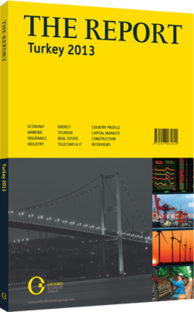Sitting on a gold mine: Heavy investment in precious metals means lots of potential
To gain some understanding of the special place that gold holds in the hearts of Turks, one need only visit one of Istanbul’s most famous sites, the Grand Bazaar. Sellers come to cash in their gold jewellery, and buyers leave with anything from gold gram wafers to chunky 100-gram bars that cost more than $5000 a piece. The rest of the bazaar goes through high and low seasons, but the gold quarter bustles all year long.
Pot of Gold
Nobody knows how much gold Turkish households have managed to save up over the years. They have been buying it for decades, initially as a store of value to escape inflation and currency depreciation. Some Turks also prefer gold to interest-earning bank accounts for religious reasons.
As gold rose in value after 2001 while the domestic economy boomed, gold hoarding accelerated. The Istanbul Gold Refinery has estimated that Turks hold about 5000 tonnes, including jewellery, worth more than $250bn as of March 2013. That is close to 4% of the total global gold supply – no mean feat for a country with just 1% of the world’s population. And no doubt gold has been a very successful investment for many Turks, having more than quintupled in value since 2001.
Not All That Glitters
But there is also a big downside for the Turkish economy. Keeping savings at home deprives banks and other institutions of funding. Since Turks overall save relatively little, Turkey’s financial sector is chronically short of domestic funds. The large amount of savings kept at home in personal gold reserves makes that shortage worse. To tackle the issue, the government tried to persuade people to keep their gold on deposit at banks. Turkish banks have offered accounts denominated in gold for many years, but they were not actively promoted until 2011, when an 18% devaluation of the lira over the year drove many people to seek haven. Precious metals deposits grew almost six-fold during the year to reach TL14bn (€6.05bn). The government stepped in to encourage the trend with a reform in February 2012 that allowed banks to accept deposits and dispense withdrawals in physical metal.
Cashing In
Banks now generally accept the same locally produced standard of wafers and bars used by the Grand Bazaar gold merchants. They also regularly invite experts to branches to assess non-standard items such as gold jewellery and coins. Gold accounts are typically counted in hundredths of grams, worth a bit more than $0.50 each. Such deposits receive the same government deposit insurance protection as lira accounts, up to a value of TL100,000 (€43,180).
Banks obtain funds against their gold deposits by entering into swap agreements with foreign banks. Because of gold’s profile as a haven against risk, such swaps generally do not dry up or become more expensive when markets turn risk-averse. Term deposits of gold that pay a small amount of interest are available, or at Islamic banks, a small profit share.
A Good Alternative
Islamic banks, known in Turkey as participation banks, have been the most enthusiast promoters of gold accounts. Islamic banks have about a 6% share of banking sector deposits, but they hold almost a quarter of precious metals deposits, according to the Banking Regulation and Supervision Agency. Such figures are “an important indicator of sensitivity to taking interest”, ‹brahim Ö €üdücü, the head of financial institutions at Bank Asya, Turkey’s largest Islamic bank, told OBG. “I believe there’s a significant portion of the population that keeps its savings out of the financial system for religious reasons. This is why especially religious people are investing in gold accounts.”
Kuveyt Türk Participation Bank even dispenses gram gold wafers from its ATM machines so clients and others can “stop worrying about forgetting to purchase gold,” according to the bank’s website. The service is marketed as a convenient way to buy small gifts of gold that Turks traditionally give at weddings and births of babies. Turks might be more motivated to bring in their gold after another step taken by the Capital Markets Board in March 2013; the board has permitted private pension funds to invest in gold.
You have reached the limit of premium articles you can view for free.
Choose from the options below to purchase print or digital editions of our Reports. You can also purchase a website subscription giving you unlimited access to all of our Reports online for 12 months.
If you have already purchased this Report or have a website subscription, please login to continue.

